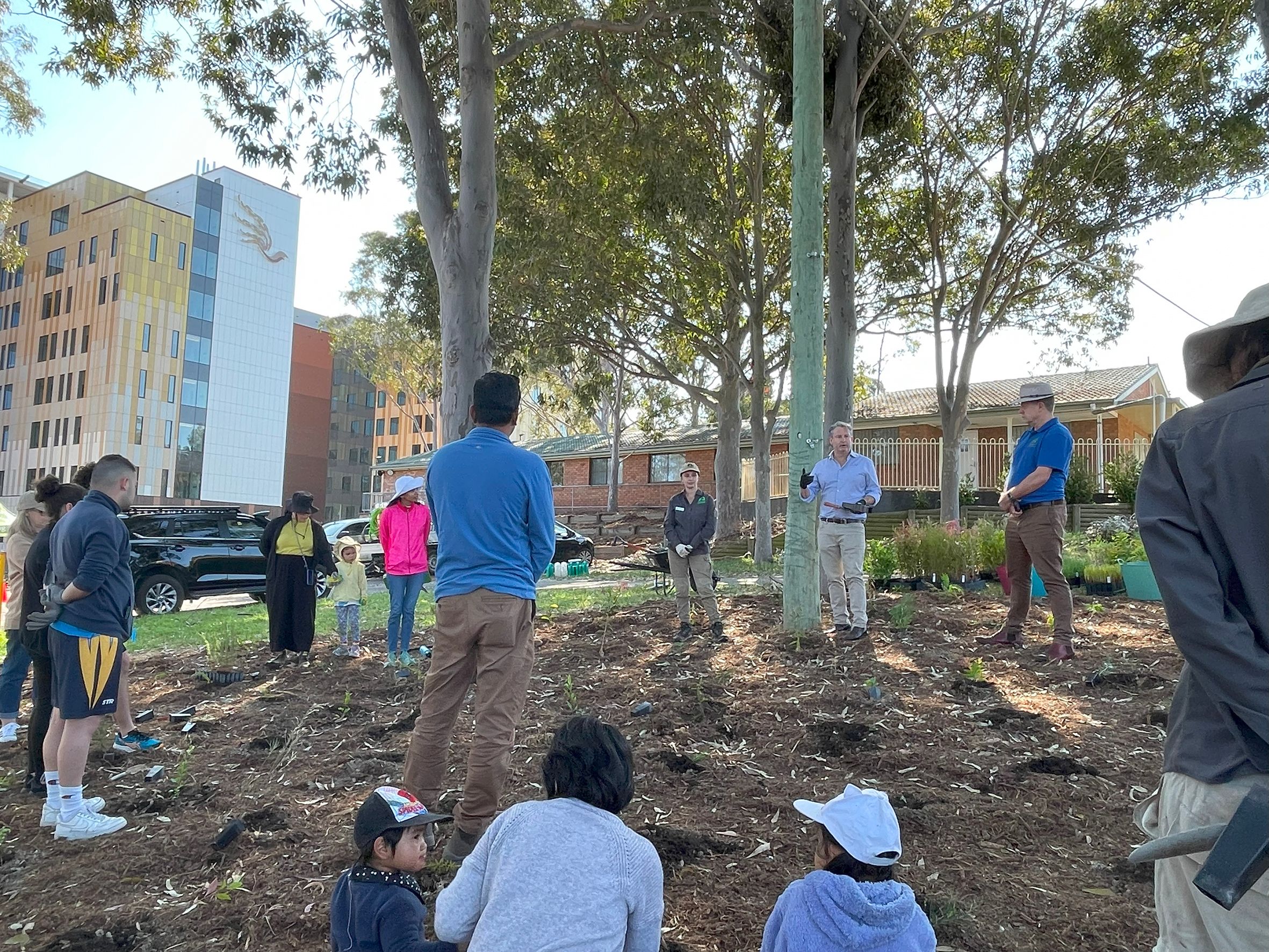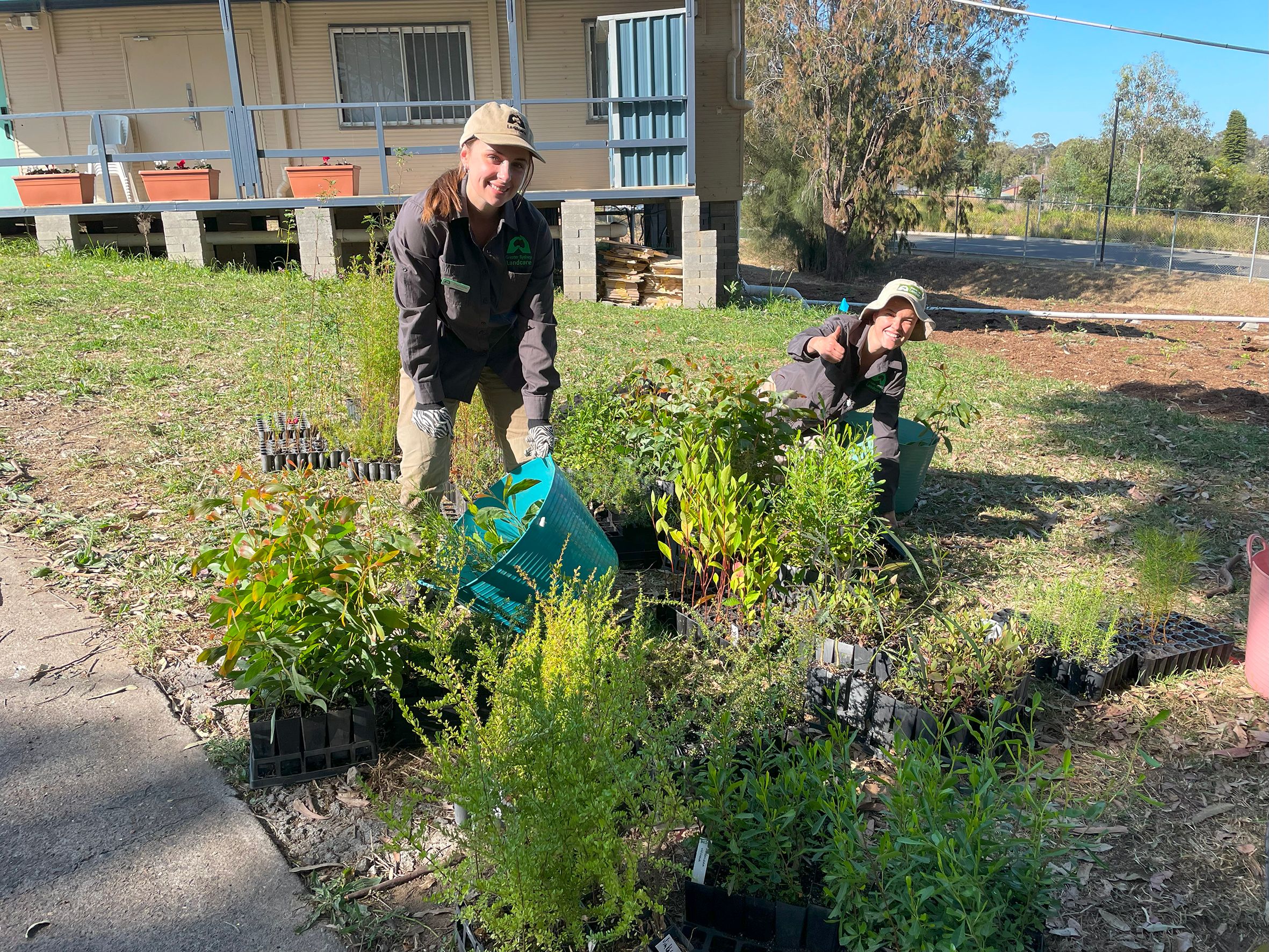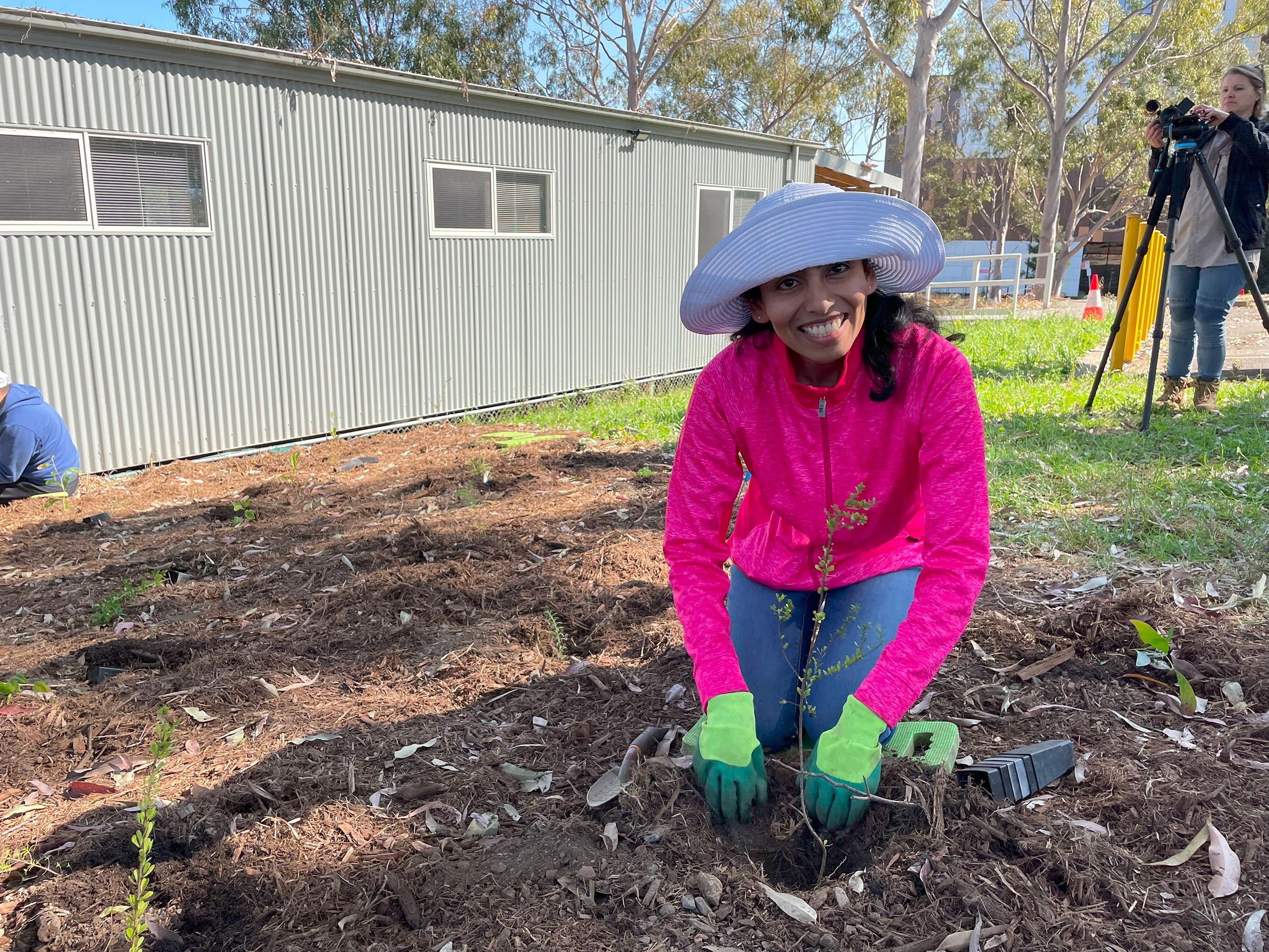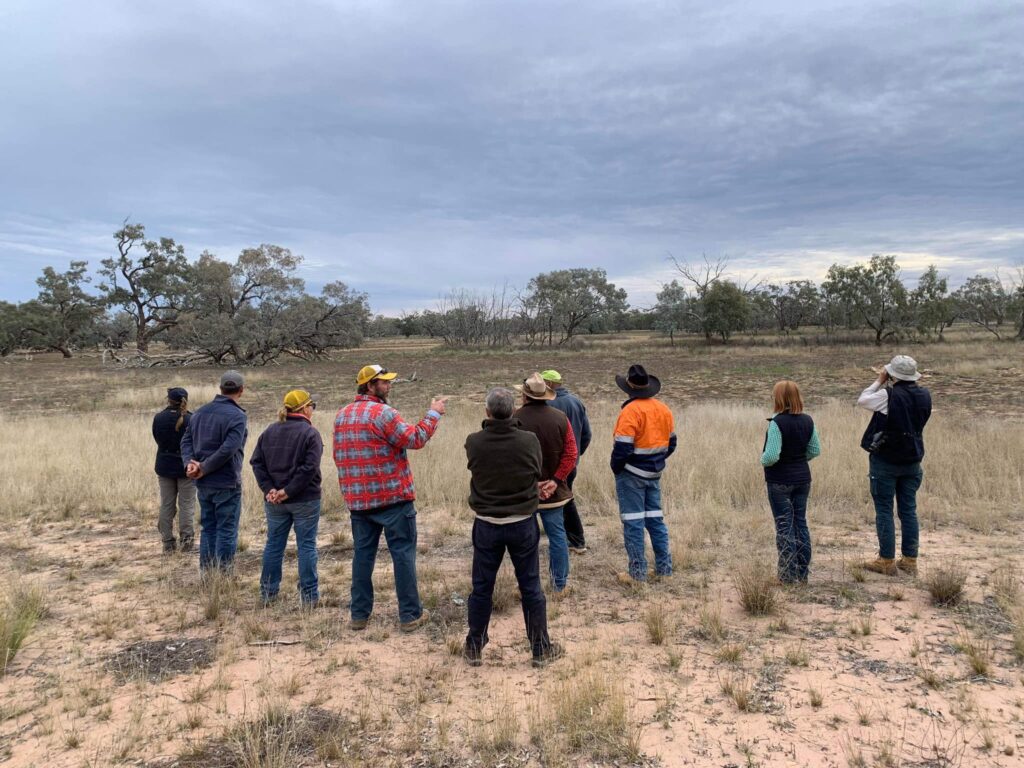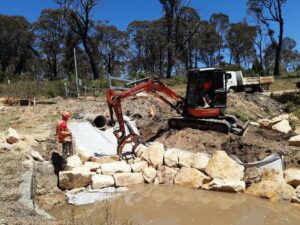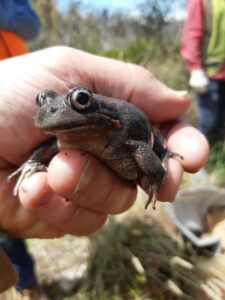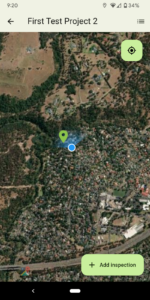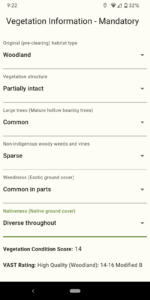In the dynamic landscape of Sydney, a notable shift is underway. Landcare NSW is at the heart of this transition, a grassroots organisation driven by its commitment to bolster community well-being and environmental resilience.
With a series of programs, projects, community and government initiatives, and a deep sense of responsibility, Landcare NSW is weaving a tapestry of change aimed at making Sydney both more sustainable and liveable. But we are not restricted to improving Sydney – our footprint covers 60% of the State’s land area.
Our grassroots community at Landcare will be critical to ensure we are creating an environment that enables all communities of our State to be safer and better equipped to deal with the emerging and increasing risks from extreme weather, including heatwaves, fires, droughts and severe weather.
Landcare NSW is a beacon of positive change in New South Wales, advocating for community and environmental wellbeing. The organisation works tirelessly to enhance the natural landscape and empower local communities. Every region in Sydney has its own set of environmental needs. Landcare NSW acknowledges this diversity and has launched a series of localised projects.
From soil enrichment to maintaining native ecosystems, these ventures are tailor-made to address specific landscape challenges, ensuring areas are strengthened against potential adversities. This article delves into some of our disaster preparedness efforts, highlighting the significant strides made towards a greener, more resilient future for the State.
Disaster Risk Preparedness Project: Fortifying New South Wales Against Unforeseen Challenges
The increasing incidences of fires, droughts, and heatwaves in NSW are undeniable challenges. Recognising this, Landcare NSW is rolling its sleeves, working diligently to bolster community resilience. By offering educational sessions and resources, communities are better equipped with knowledge on fire-resistant plants, innovative water-saving techniques, and much more. The aim? A community that’s aware and proactive in facing nature’s challenges head-on.
Landcare NSW is pioneering the Disaster Risk Preparedness Project in collaboration with the NSW Reconstruction Authority (formerly known as Resilience NSW). This initiative underscores the pressing need for communities across New South Wales to be equipped and ready in the face of natural calamities.
At the heart of the project is a multi-pronged strategy. Firstly, it aims to educate and raise awareness among communities about the potential risks associated with natural disasters, be it fires, floods, or landslips. Through tailored workshops, information sessions, and hands-on training, residents have the tools and knowledge to respond swiftly and effectively.
Secondly, the project focuses on creating a blueprint for localities to follow when disaster strikes. This involves mapping out evacuation routes, establishing communication lines, and ensuring that essential services remain accessible.
The combined expertise of Landcare NSW, known for its grassroots community engagements, and the NSW Reconstruction Authority, with its vast experience in disaster management, ensures that the Disaster Risk Preparedness Project is not just about reacting to disasters but proactively preparing the State to face, mitigate, and recover from them.
Creating Canopies Project: A Collaborative Vision for a Greener Sydney
Sydney’s urban corridors are witnessing a surge in canopy areas. Landcare NSW is ensuring multifaceted benefits for the city by actively promoting and increasing tree coverage. More trees equate to reduced effects of urban heat, providing residents with cooler surroundings during peak summer. Additionally, trees play a pivotal role in improving air quality, adding both aesthetic charm and functional advantages. This initiative is geared towards making Sydney a haven for its residents, merging nature’s touch with urban sprawl.
The Creating Canopies Project represents a groundbreaking collaboration between Landcare NSW, Greater Sydney Landcare, and the NSW Department of Planning. Recognising the multifaceted benefits of increased urban greenery, this partnership is committed to enhancing Sydney’s canopy coverage and surroundings. At its core, the project aims to introduce more trees into the urban landscape. This mitigates the effects of urban heat and improves air quality and adds to the aesthetic appeal and mental well-being of Sydney’s residents. Beyond just planting, the initiative ensures that the right species are chosen for specific locales to maximise ecological balance and resilience.
By pooling the expertise of community-driven organisations like Landcare NSW and Greater Sydney Landcare with the regulatory and planning proficiency of the NSW Department of Planning, the Creating Canopies Project is set to make a lasting impact. The joint endeavour promises a more sustainable, liveable, and green Sydney, benefiting the environment and its people.
Natural Capital Supply Chain Project: Meeting Future Demands Head-On
One of the standout commitments in Landcare NSW’s current Strategic Plan is the Natural Capital Supply Chain Project, commonly called the Nursery Project. With foresight into the evolving environmental and economic needs of New South Wales, this project is meticulously designed to address the anticipated surge in demand for reliable sources of seeds, tube stock, and trees. As the economy and various sectors increasingly recognise the value of natural capital, the demand for these foundational elements becomes paramount.
With its extensive expertise and commitment, Landcare NSW is poised to become a linchpin in this emerging market. By ensuring the sourcing of these materials is appropriate and dependable, the organisation is creating a robust supply chain that can effectively cater to the multifaceted demands of natural capital markets. Furthermore, this initiative seamlessly aligns with Landcare NSW’s broader commitment to a Landcare Led Resilience Program, which we aspire to establish in the short term. This overarching program aims to fortify the natural environment and the communities within, ensuring long-term sustainability and resilience in the face of natural disaster challenges. By marrying strategic foresight with on-ground actions, Landcare NSW is solidifying its role as a environmental and community wellbeing leader.
A Strong Alliance with the NSW Government
The recent endorsement from the NSW Government, evident in the September 2023 NSW Budget Announcement, is a significant milestone for Landcare NSW. By funding its principal program from 2023 to 2027, the NSW Government and Parliament have displayed their confidence in Landcare NSW’s vision: A million Landarers by 2040. This partnership represents monetary support and a shared vision for a greener and resilient Sydney and the State. Landcare NSW is deeply grateful for its unwavering support from the NSW Government and Parliament. It also highlights the NSW Government’s trust in our capability and potential to be a highly trusted service delivery partner to ensure the future health and wellbeing of our environment and communities.
“In every patch of land we nurture, in every community we empower, there’s a promise of a brighter, stronger New South Wales. Together, we’re not just planting trees but sowing the seeds for a better tomorrow.”
NSW Parliamentary Friends of Landcare: Strengthening Ties for a Resilient Future
The NSW Parliamentary Friends of Landcare stands as a testament to the vital role that bipartisan support and collaboration play in fostering sustainable and resilient communities. This group, comprising members from across the political spectrum, signifies the importance of Landcare’s mission beyond politics—it’s about the shared vision of a thriving New South Wales.
This initiative has been instrumental in building bridges within Parliament, fostering dialogue, and promoting understanding of pressing environmental challenges and potential solutions. By acting as a conduit between Landcare NSW and the broader legislative body, the NSW Parliamentary Friends of Landcare helps ensure a consistent and informed approach to environmental policy-making. Their endorsement and support provide Landcare NSW with amplified reach, enabling more communities across the State to benefit from well-resourced and impactful projects. With the backing of this influential parliamentary group, Landcare is not only gaining momentum but also ensuring that the mission to create resilient communities is deeply integrated into the State’s overarching vision for the future.
A Strong Future
While the impact of Landcare NSW is evident in the greater Sydney region, its commitment stretches far beyond the city’s limits. Landcare NSW recognises the ecological and communal nuances of the entire State, from the coastal areas to the riverine plains, from bustling regional hubs to serene rural pockets.
Our programs and projects span diverse terrains, focusing on each region’s unique challenges and opportunities. Our aspirations are high, as we envision a future where the synergy of community, a supporting government, and nature sets a global benchmark for environmental stewardship and resilience. At the heart of these initiatives is the core belief that every community deserves a thriving, sustainable environment, irrespective of its size or location. Landcare NSW ensures a holistic approach by addressing state-wide concerns, underscoring its commitment to the entire New South Wales community.
Landcare NSW stands at a pivotal juncture, bridging the aspirations of communities with tangible environmental solutions. The unwavering support from the NSW Government and Parliament further strengthens us on this journey.
– Dr Turlough Guerin, CEO, Landcare NSW
